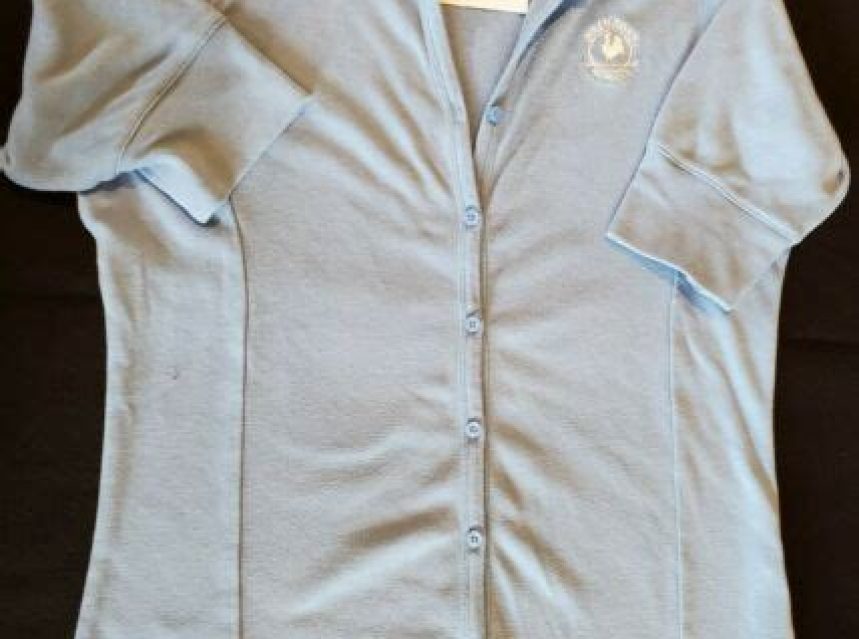Primrose School Employee Uniform Catalog

Having a professional and cohesive uniform collection is essential for any business or organization. In this blog post, we will delve into the key elements of designing a professional uniform collection. We will explore the importance of choosing the right fabrics that offer both comfort and style, as well as ways to create a cohesive look across different roles. Additionally, we will discuss personalization options that allow individuals to reflect their own unique identity within the uniform, while ensuring durability and easy maintenance. Whether you are revamping your current uniforms or starting from scratch, this guide will help you create a uniform collection that is both practical and visually appealing.
Designing a Professional Uniform Collection
When it comes to creating a professional uniform collection, there are several key factors to consider. From choosing the right fabrics for comfort and style to ensuring durability and easy maintenance, every detail counts. One important aspect is creating a cohesive look across different roles. This helps to establish a sense of unity and teamwork within the organization. Additionally, personalization options can be added to reflect individual identity and make employees feel more connected to the brand.
Listed below are some factors to take into account when designing a professional uniform collection:
- Comfort: Comfort should be a top priority when selecting fabrics for uniforms. Employees need to feel at ease and be able to move freely in their attire, especially if their roles involve physical activity.
- Style: A professional uniform collection should not only be comfortable but also stylish. It’s important to choose designs that are contemporary and reflect the brand’s image. This helps to create a positive and modern impression.
- Durability: Work uniforms are meant to withstand daily wear and tear. Choosing fabrics that are durable and long-lasting is essential to ensure the uniform collection maintains its professional look over time.
Another crucial aspect is the ability to create a cohesive look across different roles. This can be achieved through the use of consistent colors, patterns, or accessories. Having a unified appearance helps to reinforce a sense of teamwork and professionalism among employees.
Personalization options are another way to enhance a professional uniform collection. By offering choices such as embroidered names or personalized badges, employees can feel a sense of ownership and pride in their uniforms. This also allows individuals to express their unique identities within the framework of a cohesive uniform collection.
Ensuring easy maintenance is vital for a professional uniform collection. Employees should be able to clean and maintain their uniforms with minimal effort. Choosing fabrics that are easy to wash and resistant to stains and wrinkles can make a significant difference in the longevity of the uniforms.
Choosing the Right Fabrics for Comfort and Style
When it comes to designing a professional uniform collection, one of the most important factors to consider is choosing the right fabrics for comfort and style. The fabrics you select will not only impact the overall look and feel of the uniforms but also play a crucial role in ensuring the comfort and satisfaction of your employees.
One of the key aspects to keep in mind while choosing fabrics is their breathability. Employees wearing uniforms for long hours need to feel comfortable and cool throughout the day. Opt for fabrics that allow air to circulate and wick moisture away from the body, such as cotton or polyester blends. These fabrics are lightweight, soft, and offer excellent breathability, making them ideal for all-day wear.
In addition to breathability, you also need to consider the durability of the fabrics. Employees wearing uniforms may face various work-related challenges, such as spills, stains, or wear and tear. To ensure longevity, opt for fabrics that are abrasion-resistant and can withstand frequent washing. Fabrics like polyester, nylon, or blends with a higher percentage of synthetic fibers are known for their durability and ability to retain their shape even after multiple washes.
- Cotton: A natural fiber known for its breathability and comfort. It is soft, hypoallergenic, and absorbent.
- Polyester: A synthetic fiber that is durable and wrinkle-resistant. It offers good color retention and is easy to care for.
- Nylon: A synthetic fiber known for its strength and abrasion resistance. It is often used in blends to enhance durability.
In terms of style and appearance, the fabric you choose should complement the overall image of your brand or organization. Consider the type of work your employees do and the image you want to portray. If you’re looking for a more professional and polished look, fabrics like wool or silk blends can add a touch of sophistication. On the other hand, if your work environment is more relaxed and casual, you may opt for fabrics like denim or jersey knits.
| Fabric | Features | Recommended Use |
|---|---|---|
| Cotton | Soft, breathable, hypoallergenic | Offices, healthcare, hospitality |
| Polyester | Durable, wrinkle-resistant, easy maintenance | Manufacturing, service industry |
| Nylon | Strong, abrasion-resistant | Outdoor work, active wear |
Lastly, don’t forget to consider the care instructions for the fabrics you choose. Opt for fabrics that are machine washable and require minimal maintenance. This will not only save time and effort for your employees but also ensure that the uniforms remain in good condition for a longer period.
Choosing the right fabrics for comfort and style is an essential part of designing a professional uniform collection. By selecting breathable, durable, and visually appealing fabrics, you can create uniforms that not only make your employees feel comfortable but also enhance the overall image of your brand or organization.
Creating a Cohesive Look Across Different Roles
When it comes to designing a professional uniform collection, one of the key considerations is ensuring a cohesive look across different roles within an organization. A cohesive look helps to establish a sense of unity and professionalism among employees, while also reinforcing the brand image. This can be achieved through careful selection of fabrics, colors, and styles that align with the company’s branding guidelines.
Choosing the Right Fabrics for Comfort and Style
The choice of fabrics plays a vital role in creating a uniform collection that not only looks good but also offers comfort to employees. It’s important to consider the specific requirements of different roles when selecting fabrics. For example, employees who are involved in physical activities might benefit from fabrics that are moisture-wicking and breathable. On the other hand, those in customer-facing roles may prefer fabrics that are wrinkle-resistant and have a polished appearance. By carefully selecting the right fabrics, organizations can strike a balance between comfort and style.
Personalization Options to Reflect Individual Identity
In order to create a sense of individual identity within a cohesive uniform collection, it’s important to provide personalization options. This can be achieved through various means, such as allowing employees to choose from different fits and styles within the designated uniform guidelines, or by incorporating personalized accessories like name badges or embroidered logos. These personal touches not only empower employees to express their individuality but also foster a sense of pride and ownership in their role within the organization.
Ensuring Durability and Easy Maintenance
No matter how cohesive a uniform collection looks, it is imperative to ensure durability and easy maintenance. Workplace uniforms often undergo rigorous use and frequent laundering, so choosing fabrics and designs that can withstand such wear and tear is crucial. Additionally, incorporating elements like stain-resistant or wrinkle-free fabrics can significantly reduce the time and effort required for maintenance. By investing in durable and easy-to-maintain uniforms, organizations can save costs in the long run while maintaining a cohesive and professional appearance.
List of Considerations for Creating a Cohesive Look:
| 1. Branding Guidelines: | Align the uniform collection with the company’s branding guidelines. |
| 2. Role-specific Requirements: | Take into account the specific needs and activities of different roles when selecting fabrics and styles. |
| 3. Comfort and Style: | Choose fabrics that offer both comfort and a professional appearance. |
| 4. Personalization Options: | Include options for personalization to reflect individual identities and promote a sense of pride. |
| 5. Durability and Easy Maintenance: | Ensure the uniform collection is made from durable materials and is easy to clean and maintain. |
In conclusion, creating a cohesive look across different roles within an organization’s uniform collection is crucial for establishing a sense of unity and professionalism. By carefully considering factors such as fabric choice, personalization options, and durability, organizations can design uniforms that not only reflect their brand image but also meet the specific needs of their employees. A well-designed uniform collection not only enhances the overall appearance but also contributes to employee satisfaction and a positive brand image.
Personalization Options to Reflect Individual Identity
When it comes to designing a professional uniform collection, one important aspect to consider is the personalization options that can help reflect individual identity. It is essential for employees to feel a sense of ownership and to be able to express their unique style within the guidelines of the uniform. By incorporating personalization options, such as different color choices, customizable logos, and accessories, companies can create a cohesive and professional look while still allowing individuals to showcase their personality.
One way to offer personalization options is by providing a range of color choices for the uniform pieces. By offering a variety of colors, employees can select the shade that best represents their individuality or matches their personal style. For example, a company may offer a selection of neutral colors, such as black, gray, and navy blue, as well as bolder options like red or purple. This allows employees to choose a color that resonates with them personally, while still maintaining a cohesive look across the entire team.
In addition to color options, another way to personalize a uniform collection is by incorporating customizable logos or name tags. By allowing employees to add their name, initials, or even a small personal logo to their uniform, it helps to create a sense of ownership and identity. This not only enhances the overall professional look of the uniform but also allows individuals to feel a sense of pride and connection to their role within the organization.
Furthermore, providing accessories as personalization options can also reflect individual identity. Accessories such as scarves, ties, or even jewelry can add a touch of personal style to the uniform while still maintaining a professional appearance. By giving employees the freedom to choose from a selection of accessories that complement the uniform, it allows them to express their unique taste and personality within the workplace.
In conclusion, personalization options are crucial when designing a professional uniform collection as they provide employees with the opportunity to reflect their individual identity. By offering a range of color choices, customizable logos, and accessories, companies can create a cohesive and professional look while still allowing individuals to showcase their personality. This not only enhances the overall appearance of the uniform but also boosts employee morale and satisfaction. Giving employees the freedom to personalize their uniforms is an investment in creating a positive and inclusive work environment.
Ensuring Durability and Easy Maintenance
When it comes to designing a professional uniform collection, it’s important to consider not just style and comfort, but also durability and ease of maintenance. Employees wearing uniforms are likely to engage in activities that can cause wear and tear, so it’s crucial to choose fabrics and materials that can withstand frequent use and washing. By focusing on the longevity and practicality of the garments, businesses can save both time and money in the long run.
One key aspect to consider is the selection of fabrics. Opting for high-quality fabrics such as cotton or polyester blends can provide a great balance between comfort and durability. These fabrics are known for their strength and resistance to abrasion, which makes them ideal for workwear uniforms. Additionally, they are usually easy to care for, as they can be machine washed and dried without losing their shape or color.
In addition to choosing the right fabrics, it’s also important to consider the construction of the uniforms. Reinforced seams and double stitching can greatly enhance the durability of the garments, preventing them from unraveling or tearing easily. Buttons and zippers should also be of high quality to ensure they can withstand frequent use without breaking or getting stuck.
Furthermore, businesses should provide clear care instructions to their employees to ensure the longevity of the uniforms. Including washing guidelines, such as recommended water temperature and detergent types, can help employees properly clean the garments without causing damage. Additionally, providing tips on stain removal techniques or suggesting professional dry cleaning for certain garments can also contribute to their easy maintenance.
To summarize, ensuring durability and easy maintenance should be a priority when designing a professional uniform collection. By selecting high-quality fabrics, paying attention to garment construction, and providing clear care instructions, businesses can create uniforms that can withstand the rigors of everyday use and continue to look professional and polished over time.
Frequently Asked Questions
1. What factors should be considered when choosing the right fabrics for professional uniforms?
When choosing fabrics for professional uniforms, it’s important to consider comfort, durability, and style. Look for fabrics that are breathable, temperature-regulating, and moisture-wicking to ensure maximum comfort for employees. Additionally, opt for high-quality materials that are resistant to wear and tear, and easy to maintain and clean.
2. How can a cohesive look be created across different roles within a uniform collection?
To create a cohesive look across different roles, consider incorporating consistent design elements such as colors, patterns, or logos throughout the uniform collection. Choose versatile pieces that can be easily mixed and matched, allowing employees in different roles to have a unified appearance while still maintaining their individual identity.
3. What personalization options are available to reflect an individual’s identity within a professional uniform?
Personalization options can include elements such as name tags, embroidered logos, or customized accessories. Providing employees with the ability to personalize their uniforms not only allows them to feel more connected to their role, but also helps to showcase their individuality within the professional environment.
4. How can durability and easy maintenance be ensured in professional uniforms?
To ensure durability and easy maintenance, it is crucial to choose fabrics that are known for their strength and resistance to damage. Additionally, consider reinforcing high-wear areas, such as pockets or seams, and selecting fabrics that are machine washable and require minimal ironing. Providing care instructions and offering uniform maintenance tips to employees can also contribute to their longevity.
5. What are the benefits of a professional uniform collection with regards to comfort and style?
A professional uniform collection that prioritizes comfort and style can significantly enhance employee satisfaction and productivity. When uniforms are designed with comfortable fabrics and tailored to fit well, employees feel more at ease and can focus better on their tasks. By incorporating stylish elements such as modern cuts or trendy patterns, uniforms can also contribute to a positive and professional image for the company.
6. Are there any specific fabric recommendations for achieving both comfort and style in professional uniforms?
Yes, some fabric recommendations for achieving both comfort and style in professional uniforms include cotton blends, polyester blends, and performance fabrics. Cotton blends offer breathability and softness, while polyester blends provide durability, wrinkle resistance, and moisture-wicking properties. Performance fabrics, such as those with stretch and antimicrobial features, can offer additional comfort and functionality.
7. Can professional uniforms be both functional and fashionable?
Absolutely! Professional uniforms can be both functional and fashionable. By carefully selecting fabrics, incorporating modern designs, and paying attention to fit and details, professional uniforms can showcase a sense of style while still meeting the practical needs of different roles. Balancing functionality and fashionability in uniforms can boost employee morale and create a positive image for the company.



